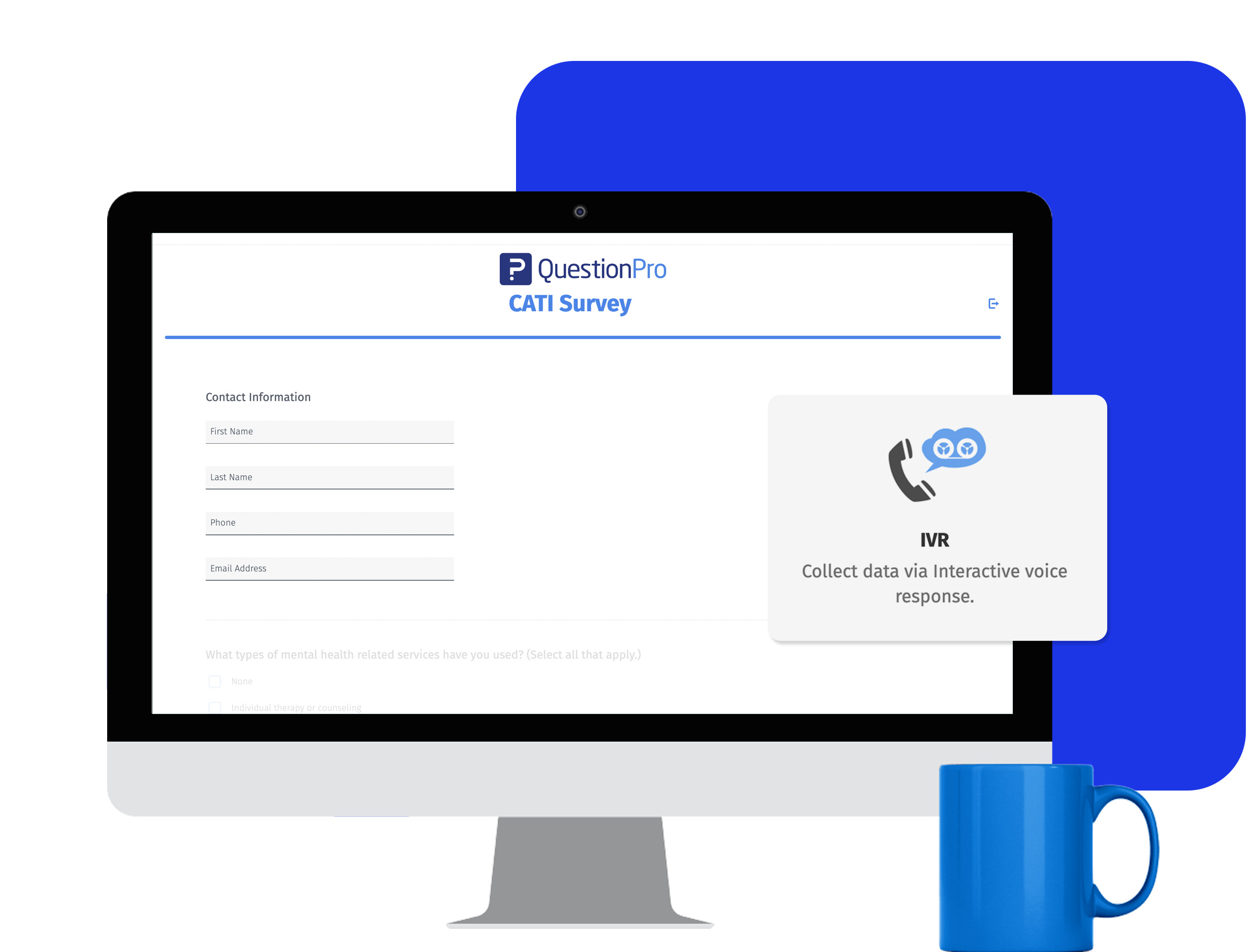A telephone survey (CATI) is very similar to paper surveys, except that the researcher punches the gathered responses to a survey link on a computer. The researcher cannot alter or modify the research questions and must follow a script for the telephone survey.
How does a telephone survey work?
Telephone surveys are a planned and efficient method of gathering data via telephone interviews. Using computer software speeds up the process while ensuring accuracy, uniformity, and data integrity.
A telephone survey operates as follows:
Sampling: The researchers begin by selecting a sample of people to take part in the survey. Depending on the research objectives, the sample may be chosen randomly or based on particular criteria. The purpose is to guarantee that the sample is representative of the population under consideration.
Questionnaire design: Researchers create a structured questionnaire with a series of questions to collect the needed information. Multiple-choice, Likert scale, and open-ended items can all be included in the survey. The questions should be straightforward, brief, and pertinent to the research objectives.
Phone surveys or interviews: Trained interviewers phone the selected participants and conduct the interviews using a computer program or software that aids in survey management. The program may supply an interviewer with a script, assist them through the questionnaire, and allow data entry during the call.
Data collection: During the phone interviews, the interviewers directly enter the respondent's responses into the CATI program. Data validation tests, which ensure that replies are within an acceptable range or format, can be included in the software. This helps to preserve data quality and reduces errors during data entry.
Data analysis: Once the survey data is collected, the data is put together and ready to be analyzed. Researchers can use statistical tools and survey methods to look at the data, find patterns, figure out how often something happens, do cross-tabulations, and come to important conclusions.
Example of telephone surveys
For example, a salon wants to collect customer feedback and personalize the interview. Instead of sending out survey emails that most customers won't acknowledge, it chooses to conduct telephone interviews.
The salon can call every customer they have and have a meaningful discussion, especially stressing open-ended questions to gather maximum data.
Uses of telephone surveys
A telephone survey is widely used in survey research, especially for a phone survey. Using a computer-assisted method, researchers can quickly collect and organize data by putting answers from telephone respondents into a survey link on a computer.
Telephone surveys are helpful in a more casual setup, in cases where respondents may have a direct relationship with the surveying organization. They are also helpful in reaching out to survey respondents whose email ids you don't have.
Telephone surveys are a great way to conduct market research, where organizations want to learn about customer preferences, behaviors, and attitudes. Researchers can reach a large range of survey respondents by conducting telephone surveys, providing for a complete investigation of industry trends and customer views.
It is a quick way of collecting feedback, especially for a skilled researcher. As most people own telephones and telephone numbers are captured at almost every POS, telephone surveys are a cheap and functional alternative to email surveys.
Advantages of telephone surveys
While telephone surveys have numerous advantages, it is crucial to note that they differ from online surveys. A telephone survey is performed over the telephone rather than online. Here are the advantages of conducting telephone surveys:
Immediate response: Unlike emails, telephonic emails gather quicker responses, especially when the audience is vast and does not belong to a research panel.
Personal touch: Telephonic surveys are more expressive than email surveys, thus adding a personal touch and capturing more responses.
Cost-effective: CATIs are more profitable, considering the high response rate compared to web surveys.
Final Words
Telephone surveys are important in survey research and are especially useful for market research. They streamline data collecting and provide a cost-effective method of gathering significant insights from telephone calls using their computer-assisted technique.
Most telephone surveys provide a systematic and standardized approach to data collection, contributing to the research findings' accuracy and dependability.
Survey Software Easy to use and accessible for everyone. Design, send and analyze online surveys.
Research Suite A suite of enterprise-grade research tools for market research professionals.
Customer Experience Experiences change the world. Deliver the best with our CX management software.
Employee Experience Create the best employee experience and act on real-time data from end to end.





